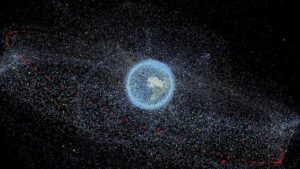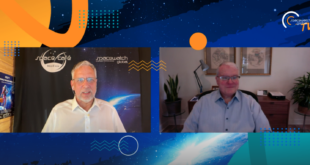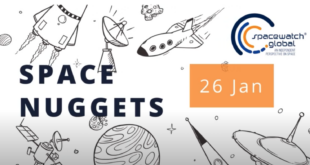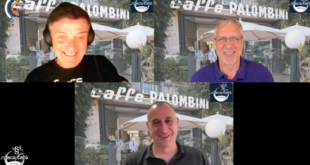
Space is the next environment that has to be protected against the impact of human development, a panel of top experts has warned at the UK Government’s GREAT Festival of Innovation in Hong Kong.
The group of academics said that international investment and regulation needs to happen urgently or space risks being as damaged as our oceans are by human development. Development on the Moon and other planets is a ‘virtual certainty’ as new resources are sought from outside the Earth. And, if not properly regulated, development will impact vital functions, such as enabling worldwide communications and vital observation of Earth.
The panel included Dr Suzie Imber and Professor Paul Monks from Leicester University, and Professor Sir Martin Sweeting and Professor Yang Gao from the University of Surrey.
Speaking as part of the Government’s drive to highlight the UK’s expertise in innovation across a range of different sectors, the experts said that as space becomes more affordable and accessible to a range of different sectors, we will see small, agile satellites launched in constellations that will herald the onset of real-time video from space. This will help developments such as monitoring widespread forest fires, snow conditions on mountains and even traffic at a macro-level.
The panel, which met on Saturday, 24 March 2018, said it will also herald the onset of regular space tourism, space mining, and colonisation of the Moon within the next 25 years, and all of the various developments have to be protected properly.
The UK Space Act came into force last week, which will see the development of launch facilities from the UK. The next step is to develop in-orbit space ports which open up the possibility of exploitation of the Moon and planets across the solar system.
The University of Surrey is due to launch its RemoveDEBRIS mission on 2 April 2018. The RemoveDEBRIS mission, which has been designed and manufactured by a consortium of leading space companies led by the University of Surrey and funded by the European Commission, is one of the world’s first concrete steps to clean up some of the estimated 40,000 sizeable pieces of space junk currently orbiting Earth.
Professor Sir Martin Sweeting said, “Space is becoming more and more accessible, and any country, university, business or even school can now realistically build and arrange for a satellite to be launched into space, which is really exciting.”
“Space tourism is going to be for the super-rich initially, but it will become more affordable in time, just as air travel did in the last century. But we have to tread with caution – we don’t want to create more debris, as the debris we already have poses a great risk to both manned and robotic missions in the future,” Sir Martin added.
Dr Suzie Imber, who is part of a ground-breaking mission to Mercury later this year, and who won the BBC Two’s ‘Astronauts: Do you have what it takes?’ competition last year, said, “There is definitely a role for commercial space flight, and it’s a virtual certainty that we will develop on other planets in the future. Therefore we have to develop suitable measures to protect the space environment now, so that the great innovation taking place in the field both in the UK and around the world is carried out responsibly.”
Professor Yang Gao, Director of the multi-million pound FAIRSpace hub, which looks at developing robotics and AI, said, “I think we are curious as human beings, and we want to push the boundaries of exploration both here and on another planet. In the next few years we’re going to push the boundaries of robotics, and we will see robots being built in space, either through being sent up in parts or by 3D printing them and then assembling them, which will pave the way for development on the moon and beyond, and we could see planetary outposts manned by robots in the future.”
Professor Paul Monks, who chaired the panel, said, “The Antarctic Treaty says that you have to remove everything you take into that area once you leave – therefore we need to consider how we get together to create similar guidelines or laws to protect space.
“The International Space Station is a great example of collaborative working for the benefit of mankind as a whole, and we have to follow that model as we move into a very exciting and potentially challenging time for the space sector,” he added.
RemoveDEBRIS
A SpaceX Falcon 9 rocket will propel and deliver the RemoveDEBRIS satellite to the International Space Station, where it will be deployed, via the NanoRacks Kaber system, to conduct a series of experiments that will demonstrate cost effective technologies that can be used to observe, capture, and destroy space debris.
In the first of two capture experiments, a net will be discharged from the RemoveDEBRIS satellite at one of the deployed target cubesats to demonstrate net capture in space. The second capture experiment will see a harpoon launched at a deployable target plate, made of representative satellite panel materials – the first harpoon capture in orbit. The third experiment involves vision-based navigation by deploying the second cubesat and demonstrating rendezvous navigation using cameras and a LiDaR. Finally, the RemoveDEBRIS spacecraft will deploy a large dragsail to speed de-orbit, where it will burn up as it enters Earth’s atmosphere.
It is estimated that there are more than 7,600 tonnes of space junk in and around Earth’s orbit – with some moving faster than a speeding bullet, approaching speeds of 30,000 miles per hour.





